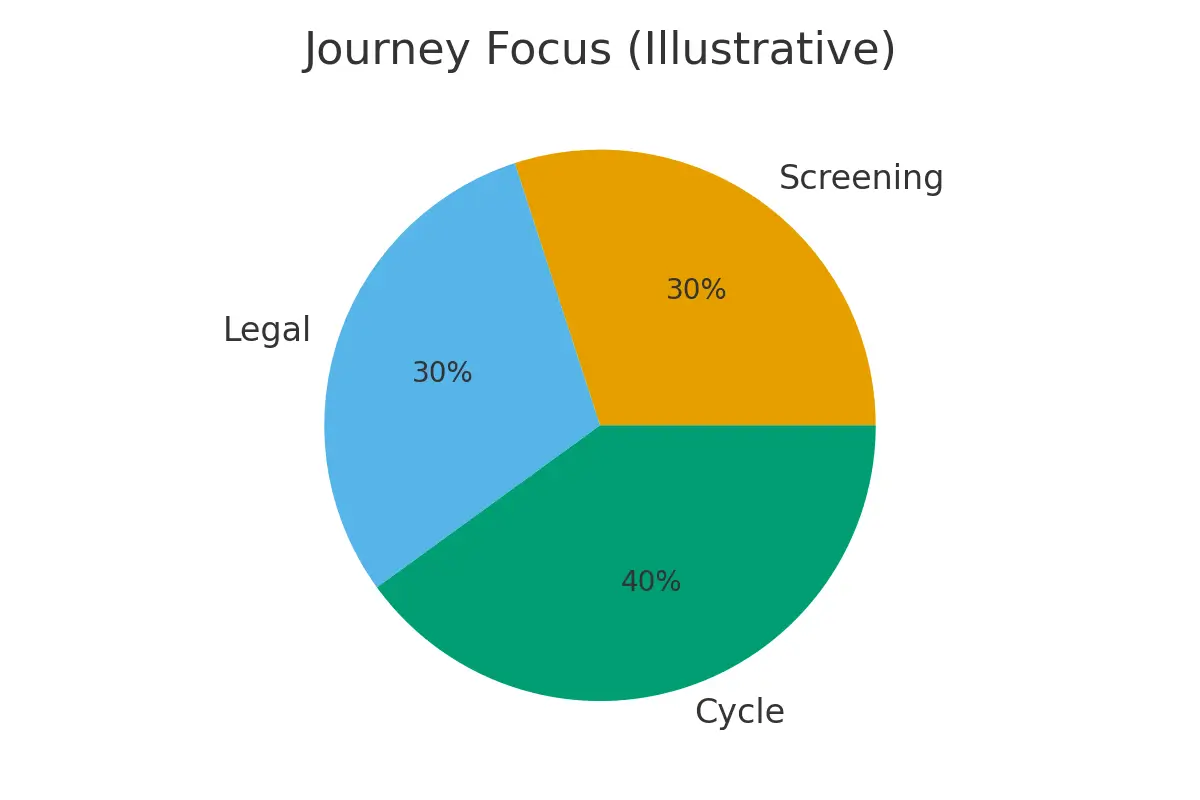
When intended parents or donors look beyond their home country for fertility treatment, they step into the world of cross-border donation. Whether it involves eggs, embryos, or sperm, this pathway can unlock opportunities but also introduces complexities—logistics, laws, and ethics that differ from one country to another. This article explains what cross-border donation is, who it helps, and what to expect. Our goal is to give you practical guidance so you can move forward with clarity, confidence, and realistic expectations.
What It Is
Cross-border donation refers to seeking fertility treatments—such as donor eggs, donor sperm, or embryo transfers—outside of your country of residence. Families may choose this option for several reasons: wider donor availability, cost advantages, or access to procedures not legally permitted at home. But international treatment also introduces added layers of paperwork, travel, and coordination. Understanding where it fits in your fertility journey helps you weigh whether the benefits outweigh the challenges.
Who It Helps
Cross-border donation can be a strong fit if:
- Your local country has restrictive laws on donor anonymity, compensation, or embryo use.
- You need a larger or more diverse donor pool to match specific medical or cultural requirements.
- Cost differences abroad significantly lower your financial burden.
- Your local clinics cannot provide certain advanced technologies, genetic testing, or procedures.
It may not be the right path if travel is too stressful medically or financially, or if legal uncertainties create risks for parental rights. Factors such as age, medical history, prior lab results, and your emotional readiness to navigate international systems all matter in the decision.
Step-by-Step
A typical cross-border donation process follows this sequence:
- Research & Clinic Selection – Compare clinics by success rates, donor availability, and transparency.
- Legal Review – Understand contracts, parental rights, and whether your home country recognizes donor-conceived children from abroad.
- Medical Coordination – Share your medical records, undergo preliminary testing, and align treatment calendars between countries.
- Travel & Logistics – Book travel, arrange for medications (sometimes across borders), and secure accommodations near the clinic.
- Treatment & Transfer – Egg retrieval, sperm donation, fertilization, and embryo transfer take place abroad, with ongoing support.
- Follow-Up – Return home for pregnancy testing, monitoring, and, if successful, prenatal care with your local provider.
Timing checkpoints—such as lab testing windows, medication start dates, and embryo transfer schedules—are critical to minimize stress and protect embryo quality.
Pros & Cons
Pros:
- Larger donor pool and wider choices.
- Access to procedures not available locally.
- Potential cost savings.
- Opportunities for anonymity or openness depending on preference.
Cons:
- Complex legal landscapes that differ by country.
- Travel stress and scheduling uncertainties.
- Possible cultural and language barriers.
- Ethical concerns, such as donor exploitation in some regions.
Costs & Logistics
Expenses vary widely but usually include:
- Donor fees, stimulation, and retrieval costs.
- Laboratory work, embryo culture, and transfer.
- Travel (flights, hotels, meals, local transport).
- Legal fees for contracts and parentage recognition.
- Medication costs at home and abroad.
Tracking costs with a checklist or simple spreadsheet helps prevent surprise bills and keeps budgets aligned with biology. Insurance coverage is often limited, and pre-authorizations may not apply abroad.
What Improves Outcomes
Certain actions have a measurable impact on success rates:
- Choosing a clinic with strong lab quality indicators.
- Aligning treatment calendars to avoid rushed cycles.
- Opting for single-embryo transfer to reduce multiples risk.
- Ensuring legal clarity before treatment begins.
By contrast, over-reliance on expensive add-ons or last-minute travel decisions rarely improves outcomes and can increase stress.
Case Study
A couple from the U.S. faced long waitlists for donor eggs locally. After researching European clinics, they chose one in Spain with transparent donor screening and English-speaking staff. With the help of a legal consultant, they confirmed that Spanish donor anonymity laws would not conflict with U.S. parentage recognition. They created a timeline that aligned their work leave with the donor’s stimulation schedule. By planning ahead and maintaining clear communication, they avoided costly delays and achieved a pregnancy within six months.
Mistakes to Avoid
- Skipping legal review. This can create major risks in custody and citizenship.
- Underestimating travel logistics. Missed flights or delays can throw off cycle timing.
- Chasing the lowest price only. Quality, safety, and transparency should be top priorities.
- Overlooking emotional strain. Couples often underestimate the stress of navigating treatment in another language or culture.
FAQs
Q. Why do people choose cross-border donation?
Ans. Mostly to access larger donor pools, lower costs, or procedures not available in their home country.
Q. Is cross-border donation legal everywhere?
Ans. No. Laws vary widely. Some countries ban compensation, enforce anonymity, or restrict embryo use. Always review the law both abroad and at home.
Q. How much does it cost?
Ans. Budgets typically range from $10,000 to $25,000, excluding travel. Costs depend on country, clinic reputation, and donor type.
Q. Will my child’s citizenship be affected?
Ans. Usually, citizenship follows the intended parents, but some cases require extra legal steps. Consulting a lawyer before treatment is essential.
Q. Can I still use my local doctor if I go abroad?
Ans. Yes. Most patients do preliminary testing at home and then return to their local doctor for pregnancy care after transfer. Coordination between clinics is key.
Next Steps
- Free 15-min nurse consult
- Upload your labs
- Get a personalized cost breakdown for your case
Related Links

Dr. Kulsoom Baloch
Dr. Kulsoom Baloch is a dedicated donor coordinator at Egg Donors, leveraging her extensive background in medicine and public health. She holds an MBBS from Ziauddin University, Pakistan, and an MPH from Hofstra University, New York. With three years of clinical experience at prominent hospitals in Karachi, Pakistan, Dr. Baloch has honed her skills in patient care and medical research.





